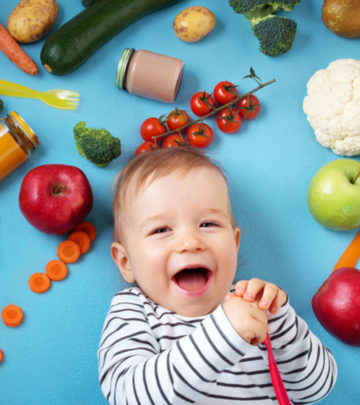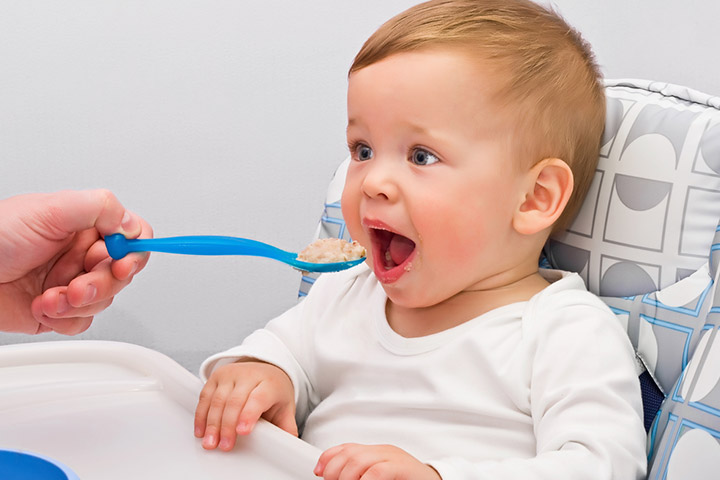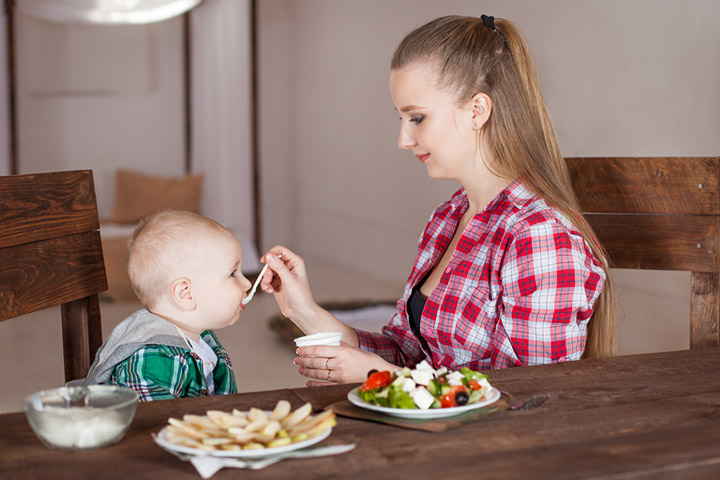
Image: Shutterstock
Everyone wants to provide the best quality of life for their little one. And you know whether it’s health, hygiene, or security, everything needs to be in proper balance. But the most important one is a balanced diet. And it can be tough to know exactly what your kids should and shouldn’t eat at each age. So to avoid this confusion, we have made a quick guide that will surely help your kids achieve the best nutrition without making the food taste too dull.
So keep on reading to find out what to give your kids at each age to help them maintain a healthy and balanced diet effortlessly.
- For A Year Old
Now that your baby is a year old, it’s time to bring some changes in their feeding habits. It’s important to introduce solid foods gradually as your baby grows older. So start by offering small amounts of soft fruits like bananas or avocados before introducing other types of food such as cooked vegetables or grains like oats. Offer iron-rich foods such as meat and poultry two or three times per week for them to get enough iron in their diet as this mineral is essential for proper development.
Make sure you’re providing plenty of fluids throughout the day. Breast milk or formula should remain their main source, but adding water will help keep them hydrated too. If you find yourself stuck on what else they may enjoy, try to experiment with different flavors. Some babies love sweet tastes while others prefer savory ones so don’t be afraid to mix things up now and then.
As far as portion size goes, start small, about 1 tablespoon, at first then increase the amount if they seem hungry after eating it all up.
- For 2 Years Old
Feeding a two-year-old can be an adventure if you know what to offer your little one. On the one hand, you want to make sure that your kid is getting all the nutrients they need. On the other hand, you also want them to enjoy their meals so that mealtime isn’t a battleground. So, worry not, fruits, green leafy veggies, and oats will provide the right balance to make sure they don’t lack any necessary nutrients. You can also add yogurt, pancakes, or any other dessert dishes to help their taste buds go happier at the end of the meal.
When it comes to portion sizes for two-year-old toddlers, remember that their stomachs are much smaller than yours so start small. So, offer about ½ cup of fruits or vegetables at each meal and snack time. For grains like bread or pasta, offer 1 ounce per year of age i.e. 2 ounces for 2 years old. You should also add dairy products in small amounts, ¼ cup of yogurt or cheese per day works great as well as 8 ounces of milk each day. And you should also include protein options such as eggs, lean meats, beans, and nuts.
Don’t forget the fun factor when feeding your toddler. Let them get creative with their meals by allowing them to pick out what goes on their plate from different food groups. This will make sure they stay interested in trying new things while still getting all the nutrients they need.
- For 3 Years Old
Feeding a 3-year-old baby can be quite the challenge and you know why. They’re at that age where they want to do everything themselves. It’s like playing a game of cat and mouse, you offer them something healthy, and they show tantrums every time.
A good rule of thumb is to offer three meals plus two snacks throughout the day. For example, breakfast could include oatmeal with fruit or yogurt, lunch might consist of a sandwich or soup, and dinner could be something like pasta with vegetables and snacks can range from crackers and cheese to fresh fruit or vegetable sticks. This type of balanced eating will ensure that your little one has all of the essential nutrients they need while still having fun trying out different flavors along the way.
And how much to feed, well anywhere around 4-5 tablespoons of each item would be good enough to make them feel full.
Optimum nutrition at the right time of age, ie. toddlerhood, helps in achieving seamless growth throughout life. So having nutritional knowledge for a parent is a must. Well, that was it for today, a quick, simple, and ready-to-refer diet guide for your toddler, that will not only help them in becoming healthier but also make them less hate veggies. Do let us know in the comments section about other products you add to your little one’s diet plan. Happy parenting!!
Sources
- Nutrition in Toddlers, NCBI
- The Feeding Infants and Toddlers Study (FITS) 2016: Moving Forward, NCBI
- Strategies and suggestions for a healthy toddler diet, NCBI
















